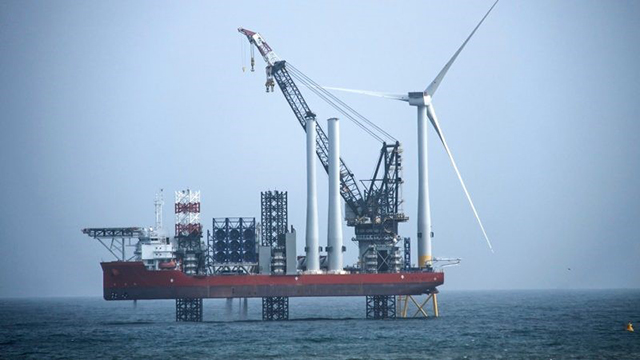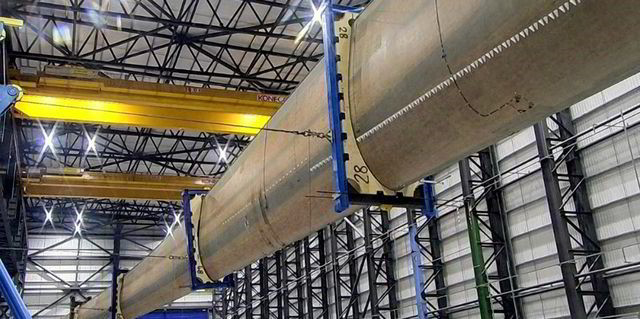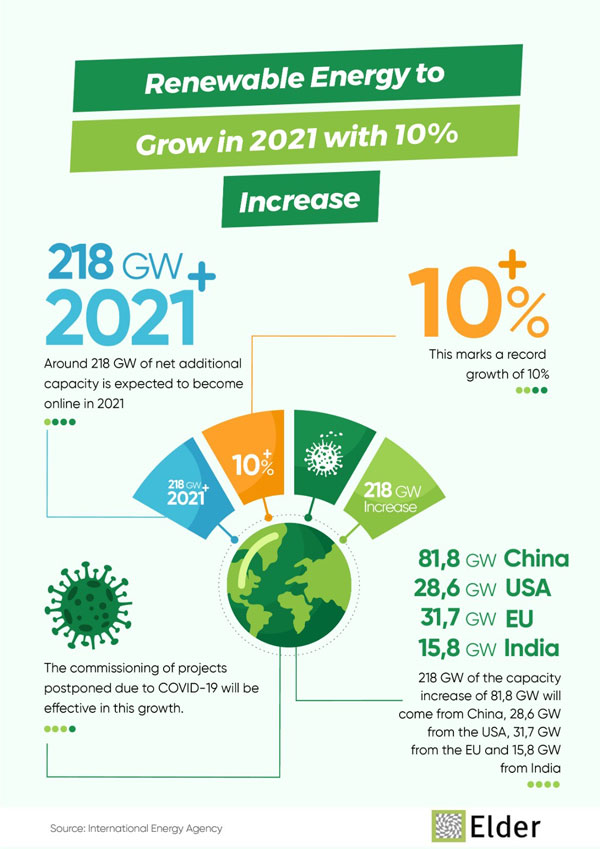
With the "Climate Project on the Use of SF6 Gas in the Electricity Sector", concrete steps were taken regarding the processing and recycling of SF6 Gas that causes climate change. Within the scope of the project in which ELDER is a partner, a roadmap for reducing the carbon footprint in the electricity distribution sector has been determined.
The closing meeting of the Climate Project for the Use of SF6 Gas in the Electricity Sector, which is financed by the European Union and implemented with the support of the European Union Directorate and the Ministry of Treasury and Finance Central Finance and Contracts Unit, was held. A draft proposal report was developed within the scope of the project, which includes the Association of Waste and Recycling Industrialists (AGED), the Electricity Distribution Services Association (ELDER) and the Association for the Protection of the Human and the Environment for a Sustainable Development (ECOM) from Romania. While the citizens will be informed about serial gases through seminars on climate change, the outputs of the 3-year Dialogue Strategy Report will be shared with the public soon.
Plan Prepared for The Recycling of SF6 Gas
Atacan Gulbay, ELDER Technical Coordinator Pointing out that the United Nations Convention on Climate Change will drag the world into a negative situation regarding greenhouse gas emissions, he emphasized that reducing the negative effects of climate change is a global problem. Gulbay mentioned that the project covers energy, transportation, industrial activities, agriculture, waste use and forest areas and is important in adding value to the future.
Gulbay informed that during the observations and examinations conducted within the scope of the project, activities were carried out to include effective elements such as one-on-one meetings, document tracking, legislation research and sharing values in the digital environment.
Large Effect of Florated Gases on Global Warming
Prof. Dr. Kadir Pekmez Hacettepe University Chemistry Department faculty member, stated that SF6 gases are used especially in the electricity sector, said that fluorinated gases replaced the substances that damaged the ozone layer in the 90's.
Stating that the danger of global warming emerged with the intensive use of fossil fuels after the industrial revolution, Pekmez said that the solution is to use renewable energy and reduce installation costs.
Greenhouse Gas Emissions May Reduce 60 Percent in 2050
Alexandru Muntoiu, ECOM Representative shared information on SF6 legislation studies in the European Union and Romania. Expressing that the use of SF6 gases, especially used in the electricity sector, by the European Union has been limited since 2015, Muntoiu emphasized that this situation will be the driving force of the transition to climate-friendly technologies in 2030.

A construction license has been granted for the third unit of the Akkuyu Nuclear Power Plant (NPP), according to Turkey's Energy and Natural Resources Ministry.
The ministry announced on Twitter Tuesday that the first reactor of the plant would be operational by 2023. "Our energy portfolio will be further diversified with a new energy source," the ministry said.
An intergovernmental agreement for the construction of the Akkuyu NPP, Turkey’s first nuclear power plant, was signed with Russia in 2010. The commissioning of the first unit of the power plant, which will consist of four reactors with a total installed power of 4,800 megawatts (MW), is planned for 2023. President Recep Tayyip Erdogan and his Russian counterpart Vladimir Putin presided over the plant's groundbreaking ceremony held on April 3, 2018, via videoconference.
The concrete work on the bases of the reactor and turbine buildings of the second power unit of the plant was completed in September this year.
Source: Daily Sabah

Clean hydrogen, carbon capture and storage (CCS), zero-carbon transport and offshore wind are all key pillars of Boris Johnson’s Ten Point Plan to push the UK towards net-zero emissions.
The Prime Minister’s highly anticipated plan was released late on Tuesday night (17 November), and signals a clear intention that the UK wants to be a world-leader in an array of clean technologies.
The plan is aimed at eradicating the UK’s contribution to climate change by 2050, which has been enshrined into law as part of the net-zero emissions target.
The £12bn plan will support up to 250,000 green jobs, with the Government aiming to secure three times as much investment from the private sector by 2030. A key aspect of the plan is to “level up” all areas of the country, with industrial heartlands in the North East, Yorkshire and the Humber, West Midlands, Scotland and Wales all focal points of the strategy.
Prime Minister Boris Johnson said: “Although this year has taken a very different path to the one we expected, I haven’t lost sight of our ambitious plans to level up across the country. My Ten Point Plan will create, support and protect hundreds of thousands of green jobs, whilst making strides towards net zero by 2050.
“Our green industrial revolution will be powered by the wind turbines of Scotland and the North East, propelled by the electric vehicles made in the Midlands and advanced by the latest technologies developed in Wales, so we can look ahead to a more prosperous, greener future.”
Source: Euractiv

French solar developers, financiers and utilities have said government plans to cut subsidies for PV project owners would lead to an “economic catastrophe” that could threaten the country’s energy transition.
A joint statement signed by executives from industry players including Voltalia, First Solar and Enphase Energy said the early termination of contracts would result in defaulted payments, job losses and the tightening of financial conditions that would slow the development of future PV projects.
The announcement was made after France’s National Assembly endorsed a government amendment to revise subsidies on the largest PV contracts signed between 2006 and 2010, as it aims to save billions of euros by 2030.
According to the country’s Ministry of Ecological Transition, the adjustments concern a few hundred contracts that generate "excessive" profits. All small and medium-sized PV installations of less than 250kWp are excluded from the proposed changes.
The ministry plans to examine contracts on a case-by-case basis to cover situations in which a subsidy reduction would compromise a site’s ability to continue operations. It said that savings made through the initiative will support the accelerated deployment of future renewable energy projects across France.
However, the joint industry statement – which was also signed by trade bodies SolarPower Europe and Enerplan – said the measure “would constitute an unprecedented impact”, adding that a large number of operations and maintenance contractors would not be able to recover.
The signatories said subsidies have helped create 17,000 jobs and enabled France’s PV sector to take off, making it possible to reduce costs. They warn that trimming the subsidies retroactively would lead to a deterioration of financing conditions, erosion in investor confidence and the loss of thousands of jobs.
French renewables association Syndicat des Energies Renouvelables (SER) said it regrets the proposals and has now called on the country’s senate to block the measure it describes as a “threat to the energy transition and climate objectives of our country.”
The French government has called for as much as 44.5 GW of installed PV by 2028 as the country targets 33% renewables in its energy mix by the end of the decade. According to SER figures, installed PV reached 9.43GW at the end of last year.
France’s new coronavirus recovery package includes €30 billion to be spent on an “ecological transition” that will also spearhead low-carbon hydrogen production. When the stimulus was announced in September, French Prime Minister Jean Castex it is “first and foremost a plan intended to serve the climate and biodiversity.”
Source: Pv Tech

Information technology firm Wipro has released a new report presenting the changing perspectives of cybersecurity globally. The 2020 State of Cybersecurity Report explores the impact of COVID-19 on the cybersecurity landscape and provides recommendations of how organisations can improve their resilience to attacks.
According to the study, an increasing number of organisations and technology firms will incorporate artificial intelligence (AI) in cybersecurity mechanisms to address sophisticated cyberattacks and become more resilient. The study found an increase in R&D, with 49% of the worldwide cybersecurity-related patents filed in the last four years being focussed on AI and machine learning (ML) applications.
Nearly half the organisations are expanding cognitive detection capabilities to tackle unknown attacks in their Security Operations Center (SOC).
Bhanumurthy B.M, president and chief operating officer, Wipro Limited, said:
“There is a significant shift in global trends like rapid innovation to mitigate evolving threats, strict data privacy regulations and rising concern about breaches. Security is ever changing and the report brings more focus, enablement, and accountability on executive management to stay updated. Our research not only focuses on what happened during the pandemic but also provides foresight toward future cyber strategies in a post-COVID-19 world.”
The study comprised 194 organisations and 21 partner academic, institutional and technology organisations over four months of research.
Source: Smart Energy International

The world’s longest wind turbine blade has arrived in the UK for testing.
The 107-metre blade will be used on the most powerful wind turbine in commercial development – the 12MW Haliade-X from GE Renewable Energy.
Along with the Haliade-X nacelle, the LM 107.0 P blade, made by GE unit LM Wind Power and the first to break the 100-metre mark, will undergo a year of testing at facilities run by the UK government-backed ORE Catapult in northeast England.
The tests will probe its ability to withstand the strong wind and tough operating conditions it faces during years of operation at sea.
Tha Haliade-X – whose development was revealed exclusively by Recharge – is due for first commercial deployments in 2021
Source: Recharge News
The 2030 Decarbonization Challenge: Path to Future of Energy
The global energy mix is shifting from fossil fuels to renewables. There are abundant examples of both public and private organizations working hard to decarbonize the economy.
Please click here to read the full report.

